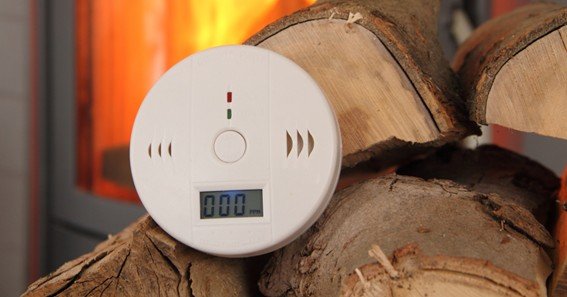The why does my propane fireplace set off the smoke alarm question frustrates many homeowners when their cozy evening by the fire suddenly ends with a blaring alarm. Even without visible smoke, propane combustion can release fine particulates, steam, and odors that sensitive detectors interpret as a fire hazard.
How Smoke Alarms Work
Most homes use ionization smoke alarms, which contain a small americium source that ionizes air between two plates. When combustion particles enter, they disrupt this current and sound the alarm on Hearth.com Forums Home. Photoelectric alarms are less prone to false triggers from tiny particles, but can still react to larger smoke clumps and dense steam.
Common Reasons Your Propane Fireplace Triggers Smoke Alarms
-
Incomplete Combustion & Fine Particulates
Propane burning with less-than-perfect air mix can produce microscopic soot or unburned hydrocarbons. Even a slight yellow tint to the flame signals incomplete combustion, releasing particles that ionization detectors register as smoke. -
Steam & Water Vapor
Vent-free propane units emit water vapor as a byproduct. High humidity or visible steam plumes can mimic smoke in the sensor chamber, especially if the detector sits nearby FOTILENFPA. -
Dust, Debris & Soot Buildup
Over time, dust and soot accumulate in both the fireplace logs and the alarm’s sensing chamber. This debris can burn off during operation or simply trigger a false reading in aged ionization detectors. -
Proximity & Airflow Patterns
If your detector is installed within 10 feet of the fireplace or directly above, convective air currents will carry heat and combustion byproducts into the alarm faster, prompting a nuisance trip. -
Aging or Overly Sensitive Alarms
Smoke alarms older than 8–10 years often become hypersensitive. Replacement is recommended every decade, and switching to a photoelectric model can reduce unwanted activations near fireplaces.
Diagnosing & Resolving False Alarms
-
Inspect the Flame: Look for yellow/orange flickering that indicates poor combustion; adjust the air shutter or have a technician tune the burner.
-
Clean & Replace Detectors: Vacuum your alarms semi-annually and install new units every 10 years. Consider photoelectric alarms near combustion sources.
-
Reposition Smoke Detectors: Move alarms at least 10 feet away from the fireplace or to adjacent rooms to avoid direct heat and steam currents.
-
Improve Ventilation: Even “vent‐free” fireplaces need fresh air. Crack a window or install a small vent to disperse combustion byproducts and moisture.
Preventive Measures & Best Practices
-
Professional Maintenance: Schedule annual service to clean burners, check gas pressure, and verify optimal combustion.
-
Use Quality Logs: Ceramic fiber logs coated in soot-resistant material produce fewer particulates.
-
Monitor Humidity: Use dehumidifiers or exhaust fans to control moisture when the fireplace runs.
-
Upgrade Alarms: Install combination photoelectric/ionization detectors or smart alarms that differentiate between steam and smoke.
Frequently Asked Questions
1. Will a propane fireplace always set off a smoke alarm?
Not necessarily. Properly maintained units with clean logs, correct air-fuel mix, and well-placed photoelectric alarms should run without false alarms.
2. Can carbon monoxide detectors be triggered by propane fireplaces?
No—CO detectors only respond to carbon monoxide, not particulates or steam. If your CO alarm doesn’t sound, but the smoke alarm does, it’s likely a particulate or steam issue.
3. How far should my smoke alarm be from the fireplace?
Ideally, at least 10 feet horizontally and out of direct airflow paths to prevent heat and vapor from reaching the sensor too quickly.
4. Are photoelectric alarms better for fireplaces?
Yes. Photoelectric sensors react to larger smoke particles and are less prone to false alarms from soot and steam, making them preferable near combustion appliances.
5. How often should I service my propane fireplace?
Annual professional inspections ensure clean burners, correct gas pressure, and proper combustion, reducing particulates and false alarms over the fireplace’s lifespan.










